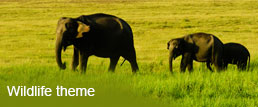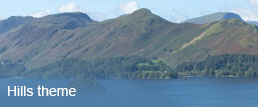What to See
Leh: Capital of Ladakh, Leh the centre of Ladakh. It is picturesquely bound by snow-laden peaks of the Himalayas and numerous monasteries. Adding to its charm is the numerous roadside restaurants, cafés, local shops selling curios and several trekking and rafting options. In fact Leh could be your base for exploring the rest of the areas. Ideally, you should take a couple of days easy in Leh, till your body gets used to the dip in oxygen. The 16th-century Leh Palace overlooking the town's lanes and markets is its most recognized attraction. This nine-storey Tibetan construction was once home to the royal family (who still own it). Within you would find walls decorated by old Buddha paintings, buttresses and jutting wooden balconies. A part of the palace has been converted to a museum and has on display thangkas, paintings and arms. The central prayer room usually remains closed and has religious texts lining the wall. Since the palace interiors are more or less dark, remember to carry a flashlight for better visibility. Open from: Summer - 7.00 am-9.30 am; occasionally open from 3.00 pm-6.00 pm; Entry fee: Indians - Rs 5; Non-Indians - Rs 100

Namgyal Tsemo Gompa: Constructed in 1430, this gompa has a rich collection of Buddhist art, ancient manuscripts, painted scrolls and wall paintings. Its special feature is the gilded image of Buddha, almost 3-storyes high. A little ahead of the monastery is a fort that allows you panoramic views of the Leh town. Open from: 7.00 am-9.00 am from prayers; Entry free.
Jama Masjid: Located in the Main Bazaar area, this green and white mosque exhibits a striking combination of Turko-Iranian architecture and was built in the 17th-century. Note that women are not within.
Hemis Gompa: Defintely the largest monastery in Ladakh, this is located 45 kms from Leh. It was built by the Red Hat sect of Buddhism and the walls are adorned with beautiful frescoes and the largest Thangka painting in the world depicting Guru Padmasambhava, which is over 12 m in length. It also houses a statue of the Sakyamuni Buddha made of precious stones. It is the site of the famous Hemis Festival, which is marked by lamas rejoicing by way of chaams or masked dances. The festival also includes a vibrant bazaar where craftsmen sell handcrafted items. Open from: 7.00 am-7.00 pm; Entry fee: Rs 15 – 20
Shanti Stupa: A new addition to the landscape, the Shanti Stupa is a pristine white structure built by the Japanese Buddhist organization to commemorate 2500 years of Buddhism. It was inaugurated by His Holiness the Dalai Lama in 1985. You can walk up to it by a flight of stairs or take a 3km drive from the Fort Road. Open from: 5.00 am-9.00 pm; Entry free
Sankar Gompa: 2 km north of the city center, this houses the monks of the Gelukpa or Yellow Hat sect. It has a grand image of Avalokiteshvara (the Buddhist deity of compassion) created in turquoise, and depicted with 1000 arms and 11 heads. Also within is the wheel-of-life, held by Yama and paintings of various Buddhas with guardian divinities. Open from: 7.00 am-10.00 am; 5.00 pm-7.00 pm; Entry free
Stok Palace: Overlooking barley terraces on the mountains, the Stok Palace stands four storeys tall and is the official residence of the royal family. Out of the 77-rooms in the palace, only one wing has been made open to the public as a museum. On display are collections of Buddhist art, weapons, jewelry, artifacts and thangkas painted with colors from crushed precious stones. Also watch the ceremonial headdresses or peraks of the earlier rules of Ladakh, decorated with turquoise, lapis lazuli, coral and gold.Open from: 7.00 am-7.00 pm; Entry fee: Rs 25
Lamayuru Monastery:This is located on a high rocky projection, over a valley and the Lamayuru Village. The monastery has several Thangka paintings on display in its main hall. It is also the site of the annual festival of Lamayuru Monastery.
Shey Monastery: Situated on a hillock, Shey Gompa was earlier the summer palace of the Ladakhi kings. It has within a 12 m tall gold-plated copper statue of Sakyamuni Buddha and celebrates its annual festival on the 30th day of the 1st month of the Tibetan Buddhist calendar.
Thiksey Monastery: This monastery is located a little away from Shey Monastery and has several statues of Buddha, a pillar inscribed with Buddhist teachings, a 15 m high seated Maitreya Buddha in the main prayer hall and a vast collection of Buddhist art. Its annual festival is held from the 17th to 19th day of the 12th month of the Tibetan Buddhist calendar. Open from: 7.00 am-7.00 pm Entry fee: Rs 15 – 20
Alchi Gompa: The Gompa is located on the bank of the River Indus and is the only gompa in Ladakh which is located on flat terrain. Showcasing a Kashmiri influence in its art and architecture, the monastery has within it beautiful images of Buddha and remarkable murals. Photography is not permitted within the Alchi Monastery. Carry a flashlight to explore the interiors, since electric lights are not permitted, for fear of damaging the paintings. Open from: 7.00 am-7.00 pm Entry fee: Rs 15 – 20
Likir Monastery:Also called the Klu-Kkhjil or Water Spirits gompa, it is situated 52 km from Leh. It was constructed over a Gompa that was burnt down in the 15th century and today houses the monks of the Gyalukpa sect. The monastery has a rich collection of paintings, robes and artifacts.
Spituk Monastery: Perched on a high hill overlooking the Indus River, the Spituk Monastery is known for its collection of Buddhist. These imposing statues are only displayed to the public during the Gu-Stor Festival in January. Further up is the Mahakal Temple where the image of Vajrabhairava is unveiled once a year at its annual festival.
Chamba Temple:Not easily reachable, the Chamba Temple is bounded by old medieval mansions and is a one-room shrine. It houses a magnanimous image of Maitreya Buddha and old wall paintings.
Leh Fort: Built by Zorawar Singh, the Zorawar Fort contains three temples but is not open for public since it is located in the military camp area.
The Ecology Centre: Located north of the main bazaar, the Ecology centre is headquarter of LEDeG (the Ladakh Ecological Development Group), that aims to counter the negative impact of western culture by fostering economic independence and respect for traditional culture. The garden in front hosts an open-air exhibition of solar gadgets, hydraulic pumps, water mills and other ingenious energy saving devices that have proved successful throughout Ladakh. You can also browse through the library, a handicraft shop that sells locally made clothes, Thangkas, T-shirts, books and postcards. Open from: 10.00 am - 5.00 pm (Monday-Saturday)
Khardung La Pass & Nubra Valley: Entry to the Nubra Valley, Khardung La (Pass), at more than 17,000 feet, is among the highest motorable roads in the world. There is a military base where permits are checked for those crossing into Nubra Valley. Also located here are a couple of simple tea shops. The pass is accessible to one-way traffic - from Leh to Nubra in the morning and vice versa in the afternoon. Literally meaning Valley of Flowers, the valley is located at about 10,000 ft. The prime attraction in this area is Bactrian Camels (double hump camels) and the Deskit & Samstanling monasteries.
Zanskar Valley: One of the coldest inhabited places, Zanskar is best explored on a vehicle, since only a handful of monasteries can be accessed from the single road. Padum was once the capital of Zanskarand today is the headquarters of the Zanskar region. This small township is located on the side of a hillock and has ruins of the erstwhile palace and fort. Ancient rock carvings can also be seen at the river bank. Karsha, is the largest and opulent of all monasteries here. Housing a rich collection of Himalayan art, its highlights include 500-year old frescoes and the chamber where teaching is conducted. Stongdey Monastery is home to the Gon Khang or the temple of guardian deities. At Burdan, you can view the assembly hall of the monastery that houses idols and stupas created in clay, bronze, copper and wood. Phugtal and Zongkhul are two rare caves, with the former housing a few temples. In addition, the Zanskar Lake offers good avenues for river rafting.
Tso Moriri Lake: This is a saltwater lake located at about 13,000 feet. Bounded by mountains, this lake is famous for its profusion of wildlife, including migratory birds, marmots and Tibetan wolves. Note: the area around Tso Moriri Lake has suffered environmental degradation due to increasing tourists. For this reason, choose a tour operator who would be environmentally conscious and make least impact when visiting.
Top Hotels in Leh Ladakh
- Dorje Guest House
- Yangphel Guest House
- Sangto Green Guest House
- Hotel Dragon
- Ladakh Himalayan Retreat
Top Landmarks in Leh Ladakh
- Hotels Near Pangong Lake
- Hotels Near Leh Main Market
- Hotels Near Khardungla Pass
- Hotels Near Hemis Thiksey Satana Monastery
- Hotels Near Thiksey Monastery






